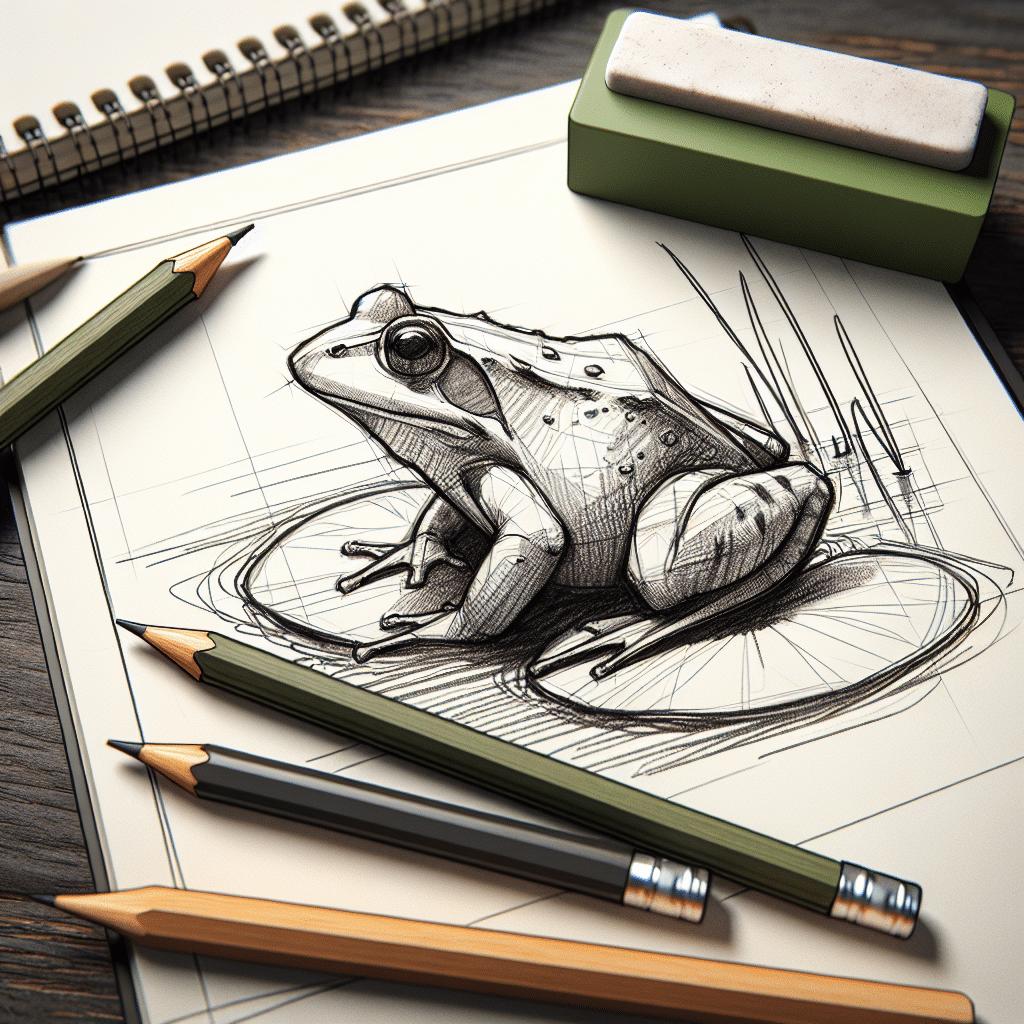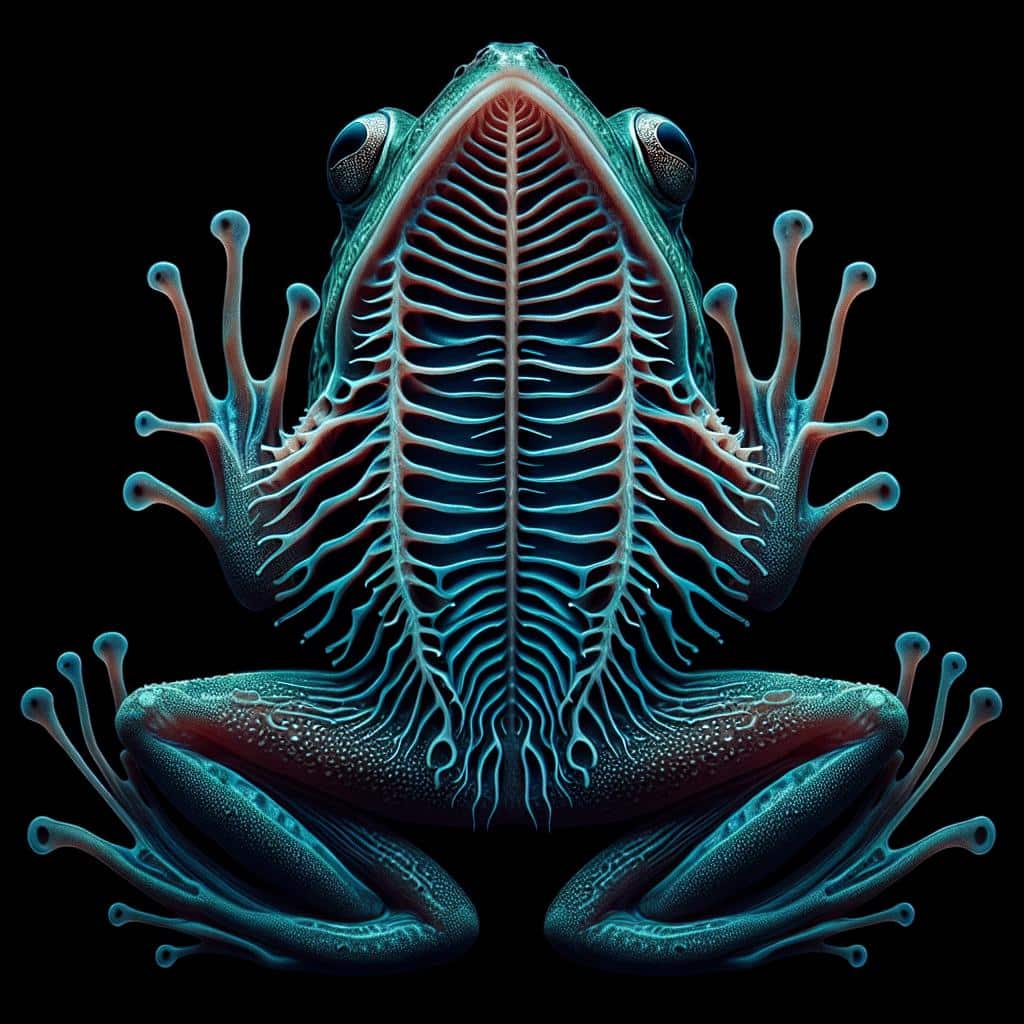Have you ever wondered why a frog’s body is so different from ours? Well, one of the things that makes them unique is their cloaca. Now, you might be asking, what is a cloaca? A cloaca is a special opening that frogs have, which is used for many different things. In this article, we will explore the function of frog cloaca and uncover the secrets behind this fascinating body part. So, get ready to dive into the exciting world of frog anatomy!

The Anatomy of Frog Reproductive System
Frogs have a fascinating reproductive system that plays a crucial role in their lifecycles. One of the most important parts of this system is the cloaca. The cloaca can be found in the lower part of the frog’s body, near the tail. It is a small opening that serves as a common exit for both the frog’s reproductive and excretory systems. The cloaca is present in both male and female frogs, although there are some differences in its structure and functions between the two genders.
Location and Structure of Frog Cloaca
The cloaca is located at the posterior end of the frog, just before the tail. It is a small opening that connects to various internal organs, including the reproductive organs, urinary bladder, and intestines. In male frogs, the cloaca is also connected to the testes and the urinary ducts, while in female frogs, it is connected to the ovaries and oviducts.
The cloaca has a complex structure that allows it to carry out multiple functions. It consists of different internal chambers that help in the storage and passage of reproductive cells, waste products, and even the exchange of gases. The walls of the cloaca are lined with specialized tissues that aid in these processes.
Comparison with Other Amphibians’ Reproductive System
While frogs have a unique reproductive system, they are not the only amphibians with a cloaca. Other amphibians, such as salamanders and toads, also possess a cloaca. However, some differences exist in the structure and functions of the cloaca among these different amphibian species.
For example, in certain species of salamanders, the cloaca is more elongated and has a more prominent role in gas exchange through its walls. On the other hand, toads have a shorter cloaca compared to frogs, and its functions are more focused on reproduction and excretion.
Role of Cloaca in Reproduction
The cloaca plays a vital role in the reproduction of frogs. It is involved in various processes that are essential for the survival and continuation of the species, ensuring the production of healthy offspring.
How the Cloaca Aids in the Reproduction Process
In male frogs, one of the main functions of the cloaca is to store sperm. During mating, the male frog releases sperm into the female’s cloaca, where it is stored until fertilization takes place. The sperm can remain viable in the cloaca for an extended period, ensuring successful reproduction even if the male and female frogs are not in close proximity.
In female frogs, the cloaca aids in the fertilization process. After mating, the female releases eggs into her cloaca, where they are fertilized by the stored sperm. The fertilized eggs are then laid by the female frog, ensuring the continuation of the species.
Other Roles it Plays in the Reproduction Cycle
The cloaca also plays a role in the development and growth of frog embryos. After fertilization, the embryos are retained in the female frog’s cloaca for a certain period, allowing them to develop and receive necessary nutrients from the surrounding fluids.
Furthermore, the cloaca aids in the expulsion of waste products from the developing embryos. It serves as a pathway for the removal of these waste materials, ensuring the health and well-being of the growing offspring.

Cloacal Respiration in Water-Dwelling Frogs
Frogs that dwell in water have an interesting adaptation known as cloacal respiration. This unique process allows them to obtain oxygen through their cloacas.
Understanding Cloacal Respiration
Cloacal respiration is a method of gas exchange where oxygen is absorbed through the specialized tissues lining the walls of the cloaca. In water-dwelling frogs, this adaptation allows them to extract oxygen from the surrounding water and directly deliver it into their bloodstream, bypassing the need for gills or lungs.
Cloacal respiration is particularly important for aquatic frog species that live in oxygen-depleted environments. It provides them with an additional means of obtaining oxygen, ensuring their survival and allowing them to thrive in their aquatic habitats.
How the Cloaca Contributes to Oxygen Exchange
The walls of the cloaca are rich in blood vessels, which facilitate the exchange of gases. As water passes through the cloaca, oxygen molecules diffuse across the thin tissues and enter the bloodstream. At the same time, carbon dioxide, a waste product, diffuses out of the blood vessels and into the water, where it is eventually expelled.
Cloacal respiration is a remarkable adaptation that allows water-dwelling frogs to efficiently extract oxygen from their aquatic environments. It ensures their survival and plays a significant role in their overall health and well-being.
Excretion Process and the Function of the Cloaca
The cloaca also plays a crucial role in the excretion process of frogs. It aids in the removal of waste products from the frog’s body, ensuring the maintenance of a healthy internal environment.
How the Cloaca Aids in the Excretion of Waste
The cloaca receives waste products from various organs and systems within the frog’s body. It serves as a common exit point for the urinary, digestive, and reproductive systems. Waste materials, such as urine and feces, are expelled through the cloaca, preventing the accumulation of harmful substances in the frog’s body.
The cloaca is directly connected to the urinary bladder, where urine is stored before being released. It also receives waste products from the digestive system, allowing the frog to excrete solid waste.
The Composition of Frog Waste and Its Impact on the Environment
Frog waste consists of both solid and liquid components. Solid waste, or feces, is composed of undigested food and other wastes from the digestive system. Liquid waste, or urine, contains dissolved substances, including nitrogenous waste products like urea.
The excretion of waste is not only important for the frog’s health but also has an impact on the environment. The nitrogenous waste products in frog urine can contribute to the nutrient levels in aquatic ecosystems. Excessive amounts of these nutrients, such as nitrogen, can lead to water pollution and the growth of harmful algae.

Cloaca and Frog Health
The health of the frog’s cloaca is crucial for its overall well-being. Various health problems can affect the cloaca, leading to serious consequences for the frog’s reproductive, excretory, and respiratory functions.
Common Health Problems Related to the Frog’s Cloaca
One common health issue related to the cloaca is cloacal prolapse, where the cloaca protrudes from the frog’s body. This condition can be caused by various factors, including injury, infections, or underlying health conditions. Cloacal prolapse requires immediate veterinary attention to prevent further complications.
Infections and inflammations of the cloaca, known as cloacitis, can also occur. These can be caused by bacterial, fungal, or parasitic infections. It is essential to maintain proper hygiene and provide a clean environment for frogs to minimize the risk of cloacal infections.
The Role of the Cloaca in Identifying Frog Health Issues
The condition of the cloaca can provide valuable insights into the overall health of the frog. Any abnormalities, such as swelling, discoloration, discharge, or changes in size, should be closely monitored. These signs may indicate underlying health issues, infections, or other problems affecting the frog’s reproductive or excretory systems.
Regular veterinary check-ups and proper care of the cloaca are essential to ensure the well-being of frogs and prevent serious health issues.
Research Findings and Evolving Understanding
Through cutting-edge research, scientists continue to uncover new information about the frog’s cloaca. These findings are shaping our understanding of this fascinating organ and its functions.
Cutting Edge Research and Findings on the Frog’s Cloaca
Recent research has focused on exploring the molecular mechanisms involved in the development and functioning of the frog’s cloaca. Scientists have identified specific genes and signaling pathways that play crucial roles in cloacal development and differentiation.
Furthermore, researchers have discovered new insights into the relationship between cloacal respiration and oxygen availability in aquatic environments. By studying the adaptations of water-dwelling frog species, scientists are gaining a deeper understanding of the complex interactions between the cloaca, respiratory system, and the aquatic environment.
How Our Understanding of the Cloaca is Evolving
As more research is conducted, our understanding of the cloaca’s structure and functions continues to evolve. Scientists are unraveling the intricate details of its role in reproduction, excretion, gas exchange, and overall frog health. These findings contribute to our broader knowledge of amphibian biology and have implications for conservation efforts and environmental management.
Frog Cloaca in Different Species
While the cloaca is a common feature among frogs, its structure and functions can vary across different species. These variations reflect the diverse adaptations and lifestyles of frogs in various habitats.
Differences in Cloaca Structure and Function in Different Species
Among different frog species, variations in cloaca structure can be observed. Some species may have longer or shorter cloacas, depending on their specific reproductive or excretory needs. Similarly, the presence of specialized structures within the cloaca can differ, allowing different species to carry out specific functions more efficiently.
For example, some tree-dwelling frog species may have adaptations in their cloacas that aid in the retention and protection of eggs. These adaptations enable them to lay eggs above ground level, reducing the risk of predation and providing a safer environment for their embryos.
Unique Cloacal Structure Among Certain Frog Species
There are also some frog species with unique cloacal structures that serve specialized functions. For instance, some male frogs have specially modified cloacas that facilitate the production of vocalizations during mating. These vocalizations play a crucial role in attracting and signaling potential mates.
The variations in cloacal structure and functions among different frog species demonstrate the adaptability and diversity of these remarkable creatures.
Development of Frog Cloaca
The development of the frog’s cloaca is an essential process that occurs during embryonic development. It plays a significant role in the frog’s lifecycle and sets the foundation for its reproductive and excretory functions.
The Development Process of the Frog’s Cloaca
During embryonic development, the cloaca is formed from the fusion of two separate structures known as the urogenital sinus and the hindgut. This fusion creates the cloacal chamber, which later becomes the central opening for both the urinary and digestive systems.
As the embryo continues to develop, various tissues and structures, including the reproductive organs, become connected to the cloaca. This enables the proper functioning and coordination of these systems during the frog’s adult life.
Significance of Cloacal Development in the Frog’s Lifecycle
The proper development of the cloaca is crucial for the frog’s overall health and reproductive success. Any disruptions or abnormalities in the development process can lead to deformities or malfunctions in the cloaca, affecting the frog’s ability to reproduce or excrete waste properly.
Understanding the developmental stages and processes of the frog’s cloaca is essential not only for scientific research but also for the conservation and management of frog populations.
Impact of Environmental Changes on Frog Cloaca
Environmental changes can have a significant impact on the functioning of the frog’s cloaca. Alterations in key environmental factors can affect the reproductive, excretory, and respiratory functions associated with the cloaca.
How Environmental Changes Can Influence Cloaca Function
Changes in water quality and temperature can directly impact the cloacal respiration process in water-dwelling frogs. Increased pollution levels or reduced oxygen availability in aquatic habitats may hinder the frog’s ability to extract oxygen efficiently. This can lead to respiratory stress and have long-term consequences for the frog’s health and survival.
Additionally, exposure to pollutants or environmental toxins can disrupt the normal functions of the cloaca, impairing reproductive processes and excretory functions. These disruptions can further impact the frog’s overall health and reproduction.
The Correlation Between Environmental Stress and Frog Reproduction
Environmental stressors such as habitat destruction, pollution, and climate change can adversely affect frog reproduction and the functioning of their cloacas. Changes in temperature, altered rainfall patterns, or the loss of suitable breeding sites can disrupt mating behaviors and reproductive cycles.
Furthermore, certain environmental stressors can lead to the development of health issues in frogs, including infections or hormonal imbalances that affect the cloaca. This highlights the importance of maintaining healthy and intact environments to ensure the proper functioning of the frog’s cloaca and the overall health of frog populations.
Cloaca and Frog Behavior
The cloaca also plays a role in the mating behavior of frogs. It influences the frogs’ choice of mates and serves as an important sensory organ during the mating process.
The Role of the Cloaca in Frog’s Mating Behavior
During mating, male frogs use their specialized cloacas to transfer sperm into the female’s cloaca. This process is often accompanied by complex courtship rituals and vocalizations. The female frogs assess the quality of the male’s sperm through sensory cues provided by the cloaca, helping them choose suitable mates for successful reproduction.
The cloaca also plays a role in determining the timing of mating behaviors. The female frogs release pheromones from their cloacas, signaling their reproductive readiness to males. These pheromones help attract suitable mates and coordinate reproductive activities within the population.
How Frog Behavior Reflects Cloaca Health and Function
The mating behavior and courtship rituals of frogs can provide valuable insights into the health and functionality of their cloacas. Any abnormalities or disruptions in these behaviors may indicate underlying health issues or conditions affecting the cloaca.
By studying frog behavior, scientists and researchers can gain a deeper understanding of the intricate connections between reproductive processes, cloacal health, and overall frog well-being.
As we continue to explore and unravel the mysteries of the frog’s cloaca, we gain a newfound appreciation for the diversity and complexity of these remarkable creatures. The cloaca’s multifunctional roles in reproduction, excretion, gas exchange, and overall frog health highlight its importance in the lifecycle and survival of frogs. By understanding and protecting the cloaca, we can contribute to the conservation and preservation of these fascinating amphibians for future generations to admire and learn from.



